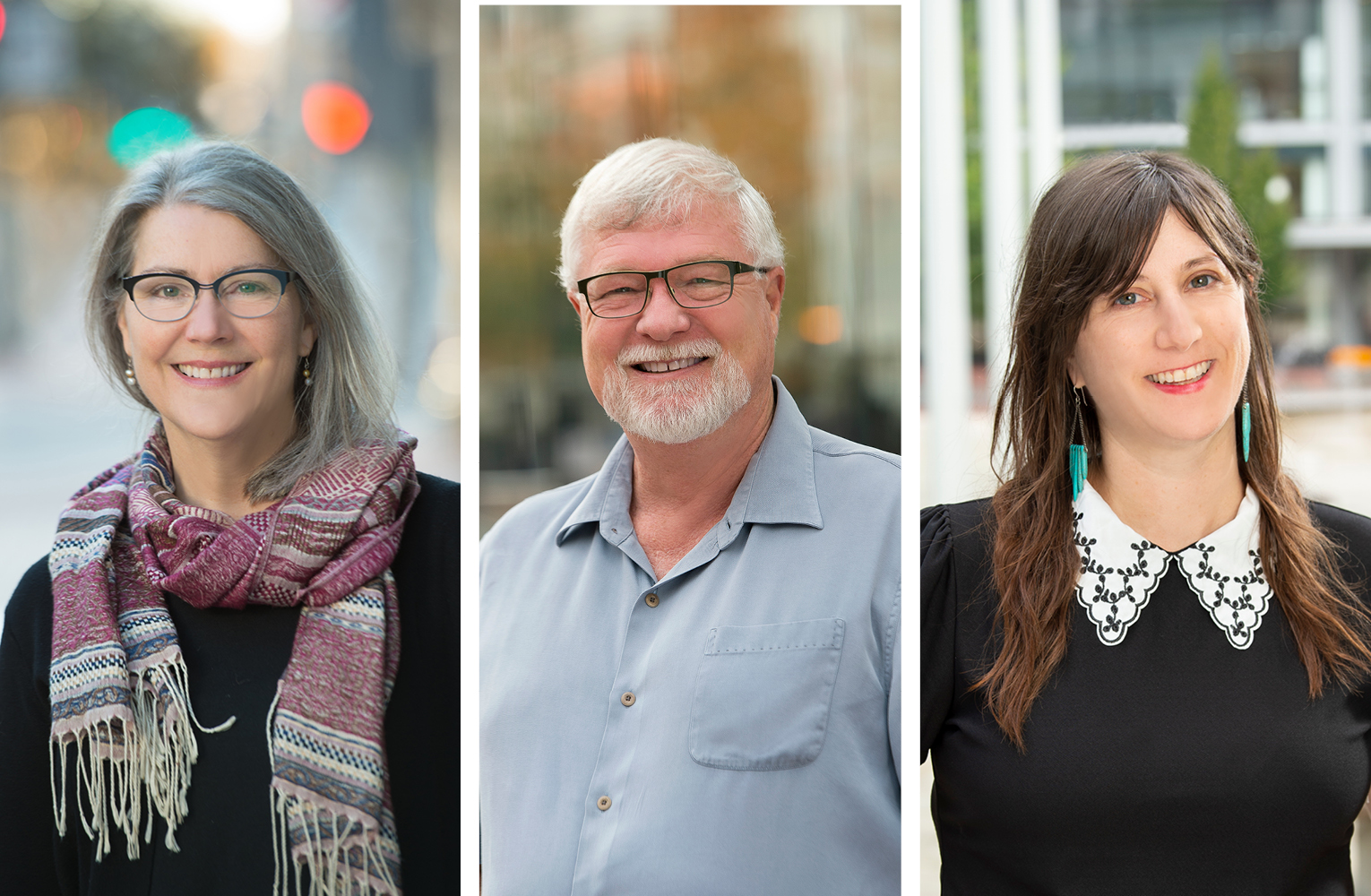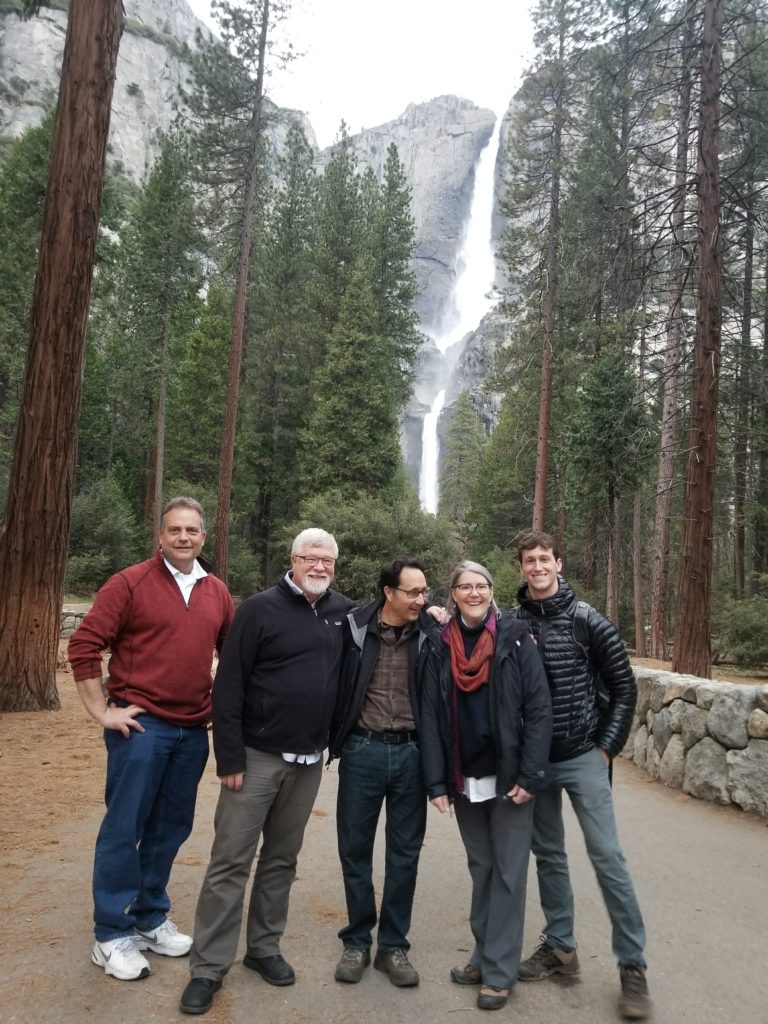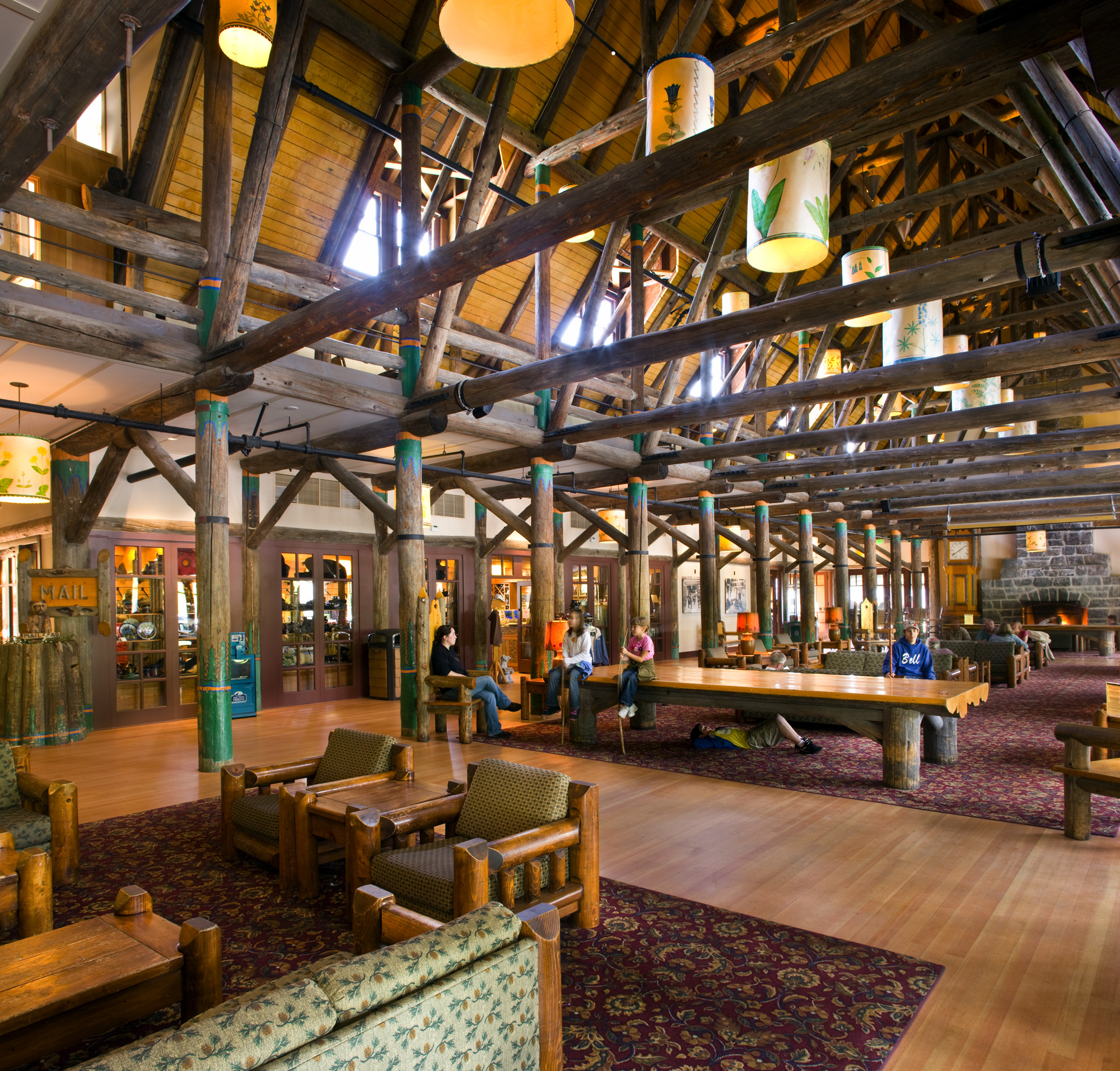With a long history of working for the National Parks Service, FFA has contributed architectural expertise to the preservation of our nation’s land, culture, and buildings throughout the Western United States. The parks are going through an historic moment of investment in response to the impacts of a changing climate and the need for modernizing their aging infrastructure. All of this, is in addition to the ongoing effort to accommodate the visitor experience, while providing accessibility that is intuitive for all people.
We gathered our NPS team of architects and architectural historians, Barbara Clement, AIA, NCARB, Stewart Thompson, AIA, LEED AP BD+C, and Brooke Willoughby, Historic Preservation Specialist, to discuss the role of architecture and their roles as citizens in maintaining our treasured national historic structures and landscapes. Curious to know what drew them to the work and how their roles have evolved over the years, we spoke a warm afternoon in October on the roof of our 9th floor office building in the historic Pacific Building to touch on the highlights of their work.
FFA: You have worked with the National Parks Service and US Forest Service on projects within the parks for the federal government for years. Talk a little about your work and the relationships you have built.
Barbara– When you meet National Parks Service folks and federal employees who are committed to natural and cultural resources, either you deeply resonate with them, or you don’t. For me it was an epiphany about who I am. As an architect, when I first met NPS employees and recognized their mission and that we had the opportunity to manifest this mission as a building, I could see a role for myself. To be able to work side by side with them, aligning our team expertise with their needs – I found this is what resonates for me.
Stewart – I didn’t start out doing design in the parks. I had no idea that you could even do that. My work is really focused on the visitor for whom I’m trying to provide the best experience possible. Information and perspective are gained from the people who are in the park and on the site. They know how the visitors use the site now, the weather conditions and existing building conditions. My role is to serve many clients, but the focus is really on supporting the visitor experience.

Brooke – I don’t have as long a professional history as Barbara or Stewart at FFA or with the National Parks Service, but I came from a different background where I had a relationship with parks before, because of several internships. We love working with the parks because we meet people with diverse backgrounds, both professionally and educationally, but in settings unlike those in other professions or in the firm. I really like that about working with NPS and it’s nice to think about coming to it not as a tourist, but by thinking about broad ways for people to enjoy these places and how we can help to keep these places relevant.
Stewart – When we started working with NPS in the spring of 2000, a principal who was here at the time, Hal Ayotte, told us that one of the things we were going to learn about working with the National Parks Service is that we’d be making friends for life. And it’s true. It’s absolutely true. The bottom line is these are not short-term projects, and neither are the relationships.
Barbara – That IS true! I can call any of them and they will take time to meet up. We hear about ideas and undertakings and goals – and sometimes it’s 10 years before they are fully implemented. Sometimes less. But we walk beside these people for a long time. They are very deliberate and accountable – very aware that they are public servants and highly respectful of us. They value us for what we bring. That feels good. They need us to hear them and make recommendations based on our knowledge and understanding. They are extraordinary. And that makes this body of work very rewarding to us.
FFA – How do you tell the stories of the past in your preservation work? Are you able to communicate the complex layers of history in the structures and the place?

Barbara – At a stakeholder planning meeting once, someone spoke up and mentioned how amazing [Mt. Rainer] is. They asked us what we could do in the design of a new visitor center that would inform people how to behave in Paradise. This challenge is present for every undertaking. How do we reflect the importance of a place and bring the visitor’s consciousness to wherever they are, whether it’s a warehouse in Minidoka, a battlefield, the side of a volcano, or a mile-wide valley with spectacular cliffs and waterfalls? We’ve learned how to listen and make the work about what we are creating together, making the project about the place. When we begin designing, it’s not about us. That’s why every project looks different. The learning continues and the only thing that is consistent with every project is the quality of work to represent the truth of the place. And the truth is different for every place.
Brooke – Every project is so unique, including the meaning behind it.
Barbara – When you are sitting in these places you are sitting in a very busy intersection – a migratory path, a flood zone, a fire zone, millions of visitors, winds, birds, plants, the geology, the archeology, and so on. The more you sit there, the more you see. And you begin to understand the past, present, and vision of a future. You bring all that together and create shadows around it so it can be seen – building not an image of the place, but evidence of the place.

Stewart – It’s about contrast. That’s the only tool we have from a design perspective. Contrast with one story and another. Each needs to be allowed to be its own story as things get added. Many of these projects are incrementally funded and there are a lot of fragments of half-told stories waiting to be told that we run into in the parks. How do you knit a wholeness as a singular identity when there are so many layers?
We are continuing the story the of the land, the site, the construction, the building, the occupants, and the future. We’re such a small part in this layer of historic context. As part of the next generation of this profession, Brooke’s viewpoint on a project is hugely important.




Part 2 Interview – “FFA’s Historic Preservationists Discuss Their Work with the National Park Service“

